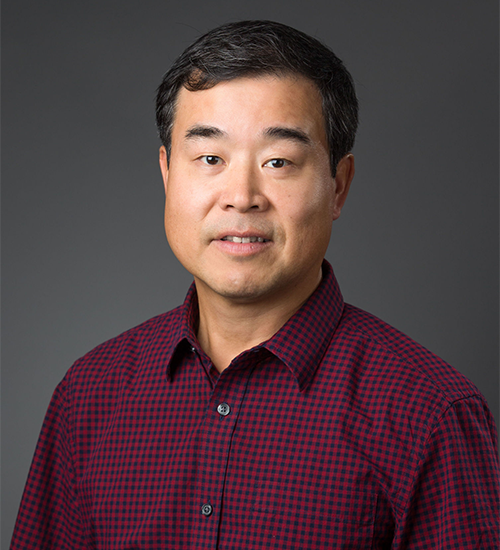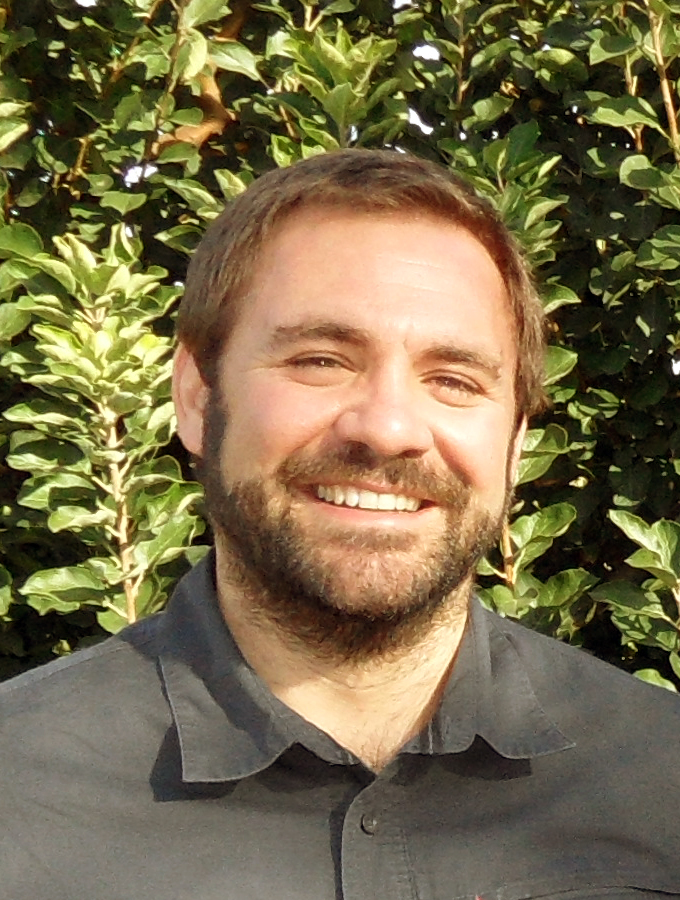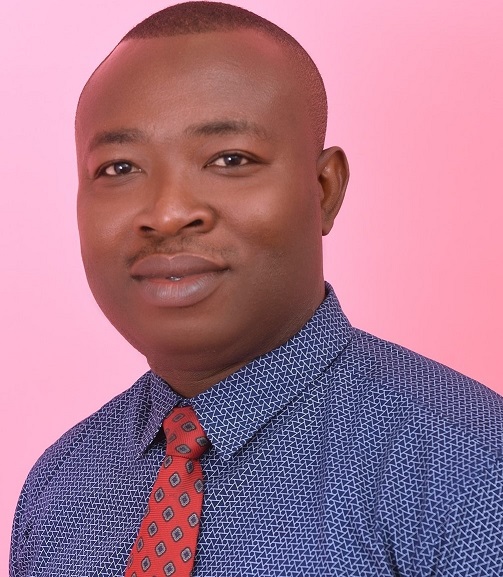
Date: Tue Aug 2, 2016
Time: 3:40 PM - 5:40 PM
Moderator: Shrini Upadhyaya
World climate change and extreme weather conditions can generate uncertainties in crop production by increasing plant diseases and having significant impacts on crop yield loss. To enable precision agriculture technology in Florida’s citrus industry, a machine vision system was developed to identify common citrus production problems such as Huanglongbing (HLB), rust mite and wind scar. Objectives of this article were 1) to develop a simultaneous image acquisition system using multiple cameras on a customized conveyor that rotates citrus fruit in order to allow the imaging hardware to acquire the entire fruit surfaces, 2) to develop a machine vision algorithm with a deep learning technique utilizing a convolutional neural network to accurately inspect the visual characteristics of fruit surface and distinguish HLB-infected citrus from fruit with other common defects, and 3) to simulate real-time video processing utilizing a GPU for faster image processing. A real-time video processing with the state-of-the-art deep learning algorithm was developed and tested using uncompressed RGB video streams recorded from the developed hardware. Accuracy of various defect detection by deep convolutional neural network was 100, 89.7, 94.7, and 88.9 percent for healthy, HLB, rust mite and wind scar classes, respectively. The system can be used in citrus packing houses or developed on a portable conveyor that identifies severity of the diseases in particular locations and enables site-specific crop management in the field.

LiDAR (light detection and ranging) sensors have shown good potential to estimate canopy volume and guide variable rate applications in different fruit crops. Oranges are a major crop in Brazil; however the spatial variability of geometrical parameters remains still unknown in large commercial groves, as well as the potential benefit of sensor guided variable rate applications. Thus, the objective of this work was to characterize the spatial variability of the canopy volume in a commercial orange grove. A 25 ha orange grove located in São Paulo, Brazil was chosen for this study. A 2D LiDAR sensor and a GNSS (Global Navigation Satellite System) receiver were mounted on a vehicle to scan the sides of the tree rows as the vehicle moved along the alleys. At each scan, distance values were collected in 181 different directions in the vertical plane. Data were converted into a tridimensional georeferenced point cloud from which the canopy volume of individual trees was computed. A geostatistical analysis was performed to characterize the field’s variability. The canopy volume varied from 1.29 to 26.5 m³ per tree showing a coefficient of variation of 20%. The geostatistical analyses showed a weak spatial dependence and a range of 127 m. The variability found in this field suggests that sensor-based variable rate applications is an appropriate approach to manage inputs according to tree canopy volume variability.
.png)

Citrus black spot (CBS), or Guignardia citricarpa, is known as the most destroying citrus fungal disease worldwide. CBS causes yield loss as a result of early fruit drop, and it leaves severely blemished and unmarketable fruit. While leaves usually remain symptomless, CBS generates various forms of lesions on citrus fruits including hard spot, cracked spot, and virulent spot. CBS lesions often appear on maturing fruit, starting two months before maturity. Warm temperature and sunlight exposure increase the number of lesions. Two main sources of inoculum are infected leaves decomposing on citrus orchard floor and lesions on infected branches, fruits, and leaves. Wind and water splash can spread the disease to healthy trees. In order to better control the CBS disease, the infected trees should be identified and located preferably at the early stages of infection for an efficient site-specific treatment. In this paper, an affordable vision based sensing method was introduced that was able to detect the citrus fruit with CBS lesions under the field condition. It was shown in a previous study that CBS lesions could be identified with a 100% accuracy in a laboratory using only the color information in regular RGB images. Two DSLR cameras were modified to capture images in two NIR bands as well as red, green, and blue channels. Images of citrus trees were acquired in a grove near Immokalee, Florida, USA. An image analysis algorithm was developed to segment the potential spots on the citrus fruit and confirm if they are CBS lesions. Morphological features were extracted from the potential spots in all color components of the images. The algorithm was able to determine if a fruit is CBS positive or CBS negative. The results showed that acceptable accuracies using images that were obtained by the proposed sensing system. The proposed imaging method is an affordable diagnosis method for CBS detection under the field condition.

The non-destructive application of spectrophotometry for analyzing fruit pigments has become a promising tool in precise fruit production. Particularly, the pigment contents are interesting to the growers as they provide information on the harvest maturity and fruit quality for marketing. The absorption of chlorophyll at its Q band provides quantitative information on the chlorophyll pool of fruit. As a challenge appears the in-situ measurement at varying developmental stage of the fruit due to its non-linear changes of absorption as well as scattering properties, which appear in the sum signal measured.
Studies were carried out to analyze the absorption and effective scattering coefficients, µa and µs', respectively, by means of spatially resolved spectroscopy. Example is given for pear (Pyrus communis L. 'Conference') over a period of 60 - 150 days after full bloom.
Results are encouraging for calculating µa and µs’ by means of Farrell diffusion theory model using Levenberg-Marquardt algorithm. The measuring uncertainty was <5% when reducing the 300 data points to 3 readings showing a potential for data reduction. With this approach, robust calibration can be carried out for non-destructively analyzing the chlorophyll content of pear over the period ranging from unripe to post-climacteric pears.
The study was to identify the best predictors of cocoa Farmers willingness to adopt future Precision Agriculture Technology (PAT) Development in Ghana. Correlational research design was used. The target population was all cocoa farmers who benefited from Cocoa High Technology Programme (an initiative of distributing free fertilizer by government to cocoa farmers) in Ghana. Multistage sampling technique was used to select 422 out of 400,000 cocoa farmers in the six (6) out of the seven (7) cocoa growing regions in Ghana. A content-validated and reliable structured interview schedule was used to collect primary data from respondents. Descriptive statistics and Binary Logistic Regression were used to identify the best predictors of cocoa farmers willingness to adopt PA from the main predictors (i. Demographic and farm related characteristics of cocoa farmers (18 predictors), ii. Cocoa Farmers Perceived Attributes of PA innovations (6 predictors); iii. The Awareness level of respondents in PA technologies (3 predictors). Majority (83%) of the respondents were willing to adopt future PA technology development in Ghana. The Binary Logistic regression analysis, showed that the model as a whole explained between 37.5% to 60.4% of the variances in cocoa farmers’ willingness to adopt any future PATs. Only Five (5) (Educational Level of cocoa farmers; Cocoa farmers who plant in rows; Credit from financial institution; Relative advantage of PATs and the perceived Ease of use of PATs) out of the 28 predictors made a unique statistically significant contribution to the cocoa farmers willingness to adopt future PATs developed. The odds ratio showed that the strongest predictor of farmers’ willingness to adopt any future PATs was “row planting” indicating that farmers who had already planted in rows are more likely to adopt future PATs than those who had not yet done so. The study recommended among others the need to create awareness among farmers and other major stakeholders of the potentials of PAT development in cocoa production in Ghana.

For a robotic bin-managing system working in an orchard environment, especially in modern narrow row spaced orchards in the Pacific Northwest (PNW) region of the U.S., path planning is an essential function to achieve highly efficient bin management. Unlike path planning for a car-like vehicle in an open field, path planning for a four-wheel-independent-steered (4WIS) robotic bin-managing platform in orchard environment is much more challenging due to the very confined working space between tree rows. Subject to the unique constraints of worksite space and operation limits, different steering modes are often required to accomplish the desired bin handling maneuvering actions effectively, or sometimes even all. In this study, we proposed a path planning algorithm to guide the robotic system in accomplishing several designated bin management tasks effectively, such as correcting pose error between tree rows; entering a tree lane from the headland; and loading a bin between tree rows. The path planning algorithm selects among the three steering modes of 1) Ackermann steering, 2) Active-front-and-rear steering, and 3) combination of spinning steering and crab steering to accomplish those tasks effectively. This algorithm includes a four-step optimization strategy for determining the optimal steering mode for different situations. Firstly, it computes the initial and ending postures of the robotic system, and then calculates possible paths connecting both postures for the three steering modes in absence of obstacles and worksite boundaries. In the third step, unsuitable paths are filtered out according to the obstacles and boundaries of worksites. Eventually an optimized path in terms of shortest path length is picked from the rest of admissible paths. The developed path planning algorithm was simulated in the Matlab environment to validate its accuracy, and then implemented with a self-propelled robotic platform “bin-dog” system equipped with a 4WIS system in commercial orchard environment to validate its functionalities.
